DEFINITION OF TERMS:
- KEYSTONE (shown in GREEN) means they are listed by National Wildlife Federation as core plants for a wildlife garden in my ecoregion (Ecoregion 8).
- NOT QUITE NATIVE (shown in RED) means they are slightly out of range but adjacent to NYS as determined by GoBotany and NY Flora Atlas.
- Otherwise the plant is a NY-native or native to the area noted.
KEYSTONE: Sky blue aster (Symphyotrichum oolentangiense Syn: Aster azureus)
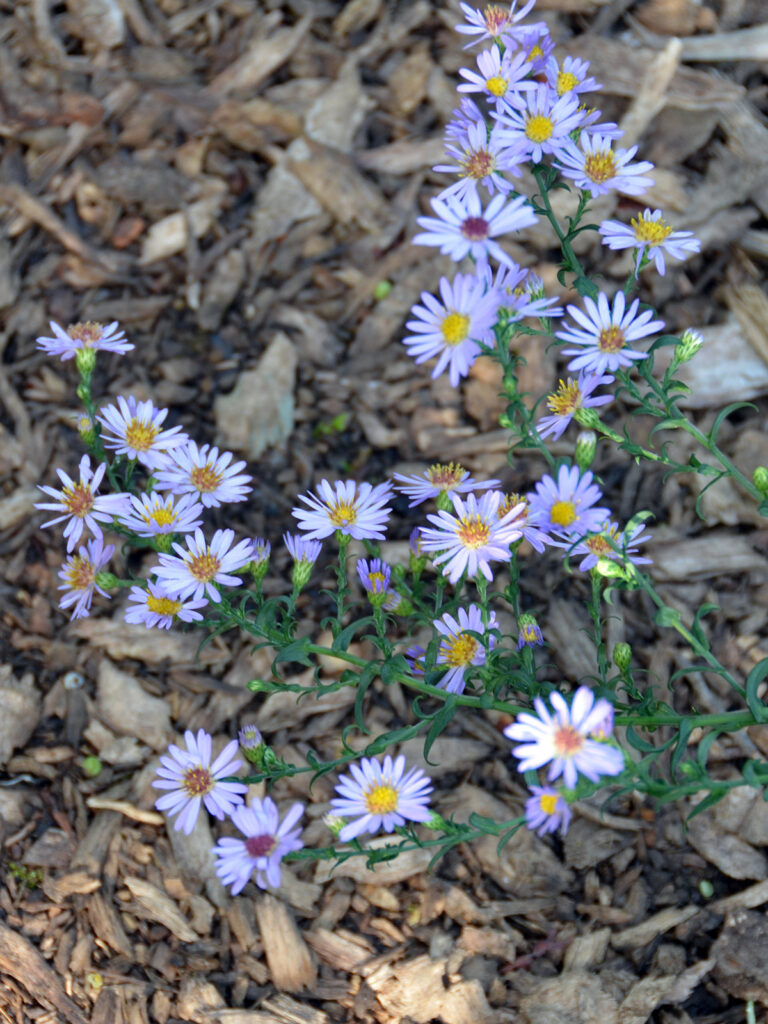
All of these asters are wonderful for wildlife, besides providing lots of fall color. Most are quite tall, so I cut some back in June. It not only keeps them smaller, but also makes them bushier.
Aster do reseed generously and also spread underground. I’m trying to learn to recognize the various types, so I can pull extras out in the spring. Otherwise, I’d soon be overrun with asters.
Wildlife: Butterflies
** SPECIAL VALUE TO NATIVE BEES **
- Learn more:
- Wildflower Center: Sky blue aster
KEYSTONE: Heartleaf aster (Symphyotrichum cordifolium Syn: Aster cordifolius)
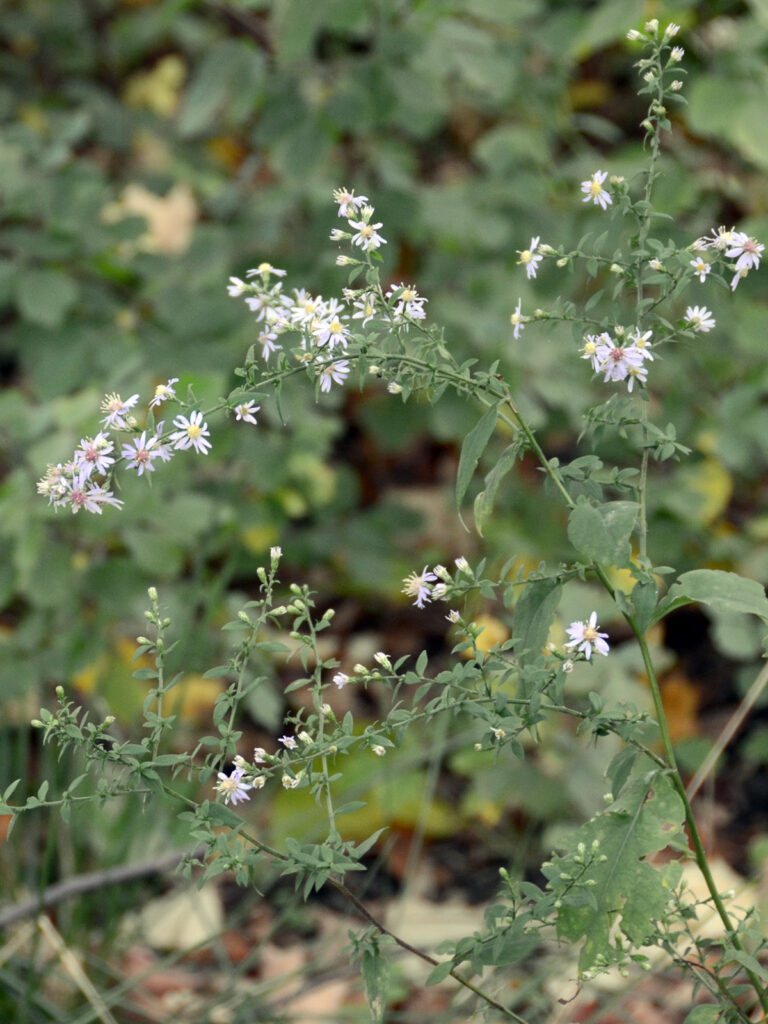
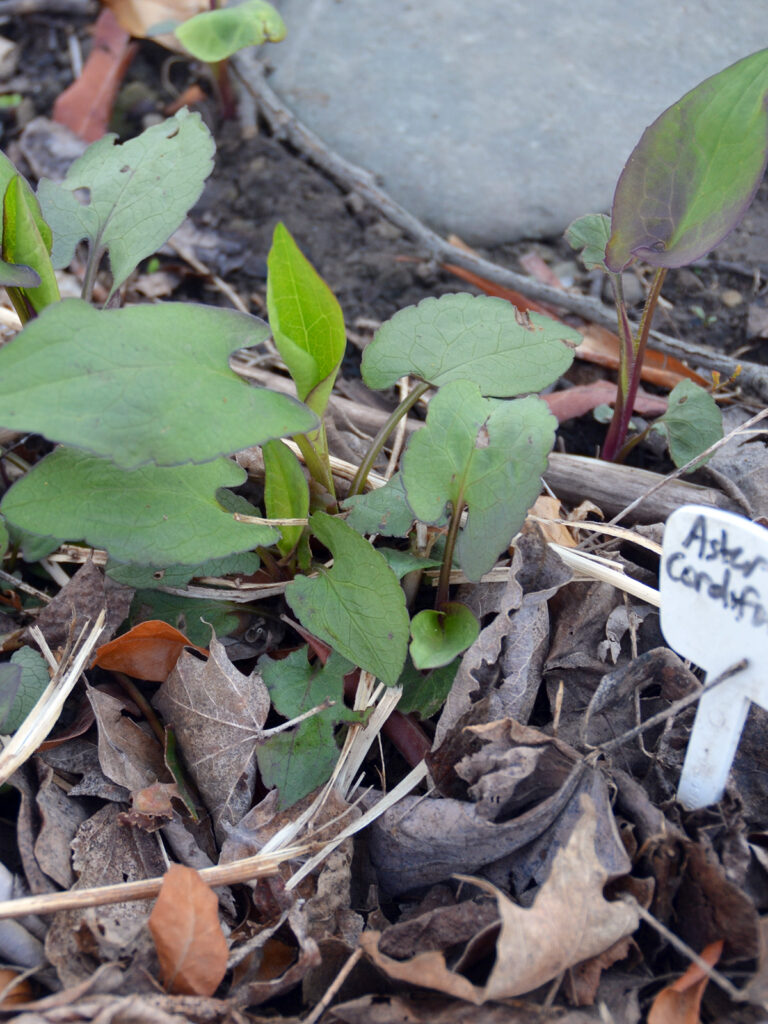
This aster has heart-shaped leaves, which aren’t as noticeable when the aster is blooming. It blooms a little later than other asters so it’s useful to extend the aster season.
** Attracts predatory or parasitoid insects that prey upon pest insects **
- Learn more:
- Wildflower Center: Heartleaf aster
White wood aster (Aster divaricatus Syn: Eurybia divaricata)
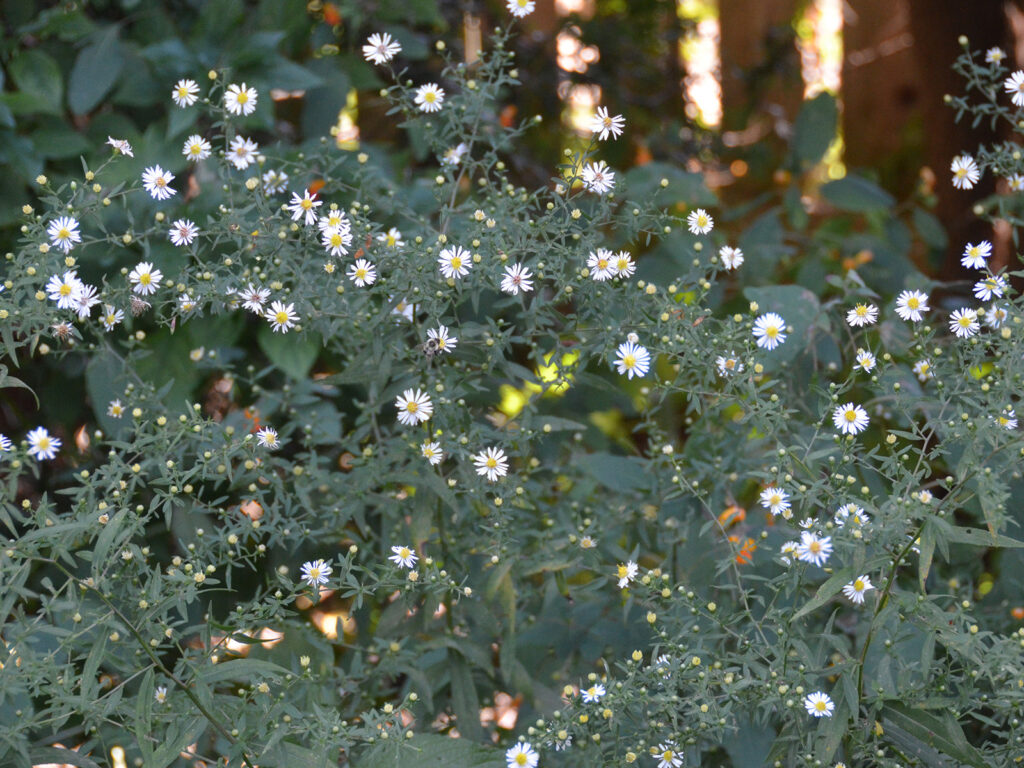
I have this here and there around the yard. (I’m not positive about the ID of all of them.)
I love the snowflake-like small white flowers.
Wildlife: Butterflies
- Learn more:
- Wildflower Center: White wood aster
KEYSTONE: Smooth aster (Symphyotrichum laeve Syn: Aster laevis)
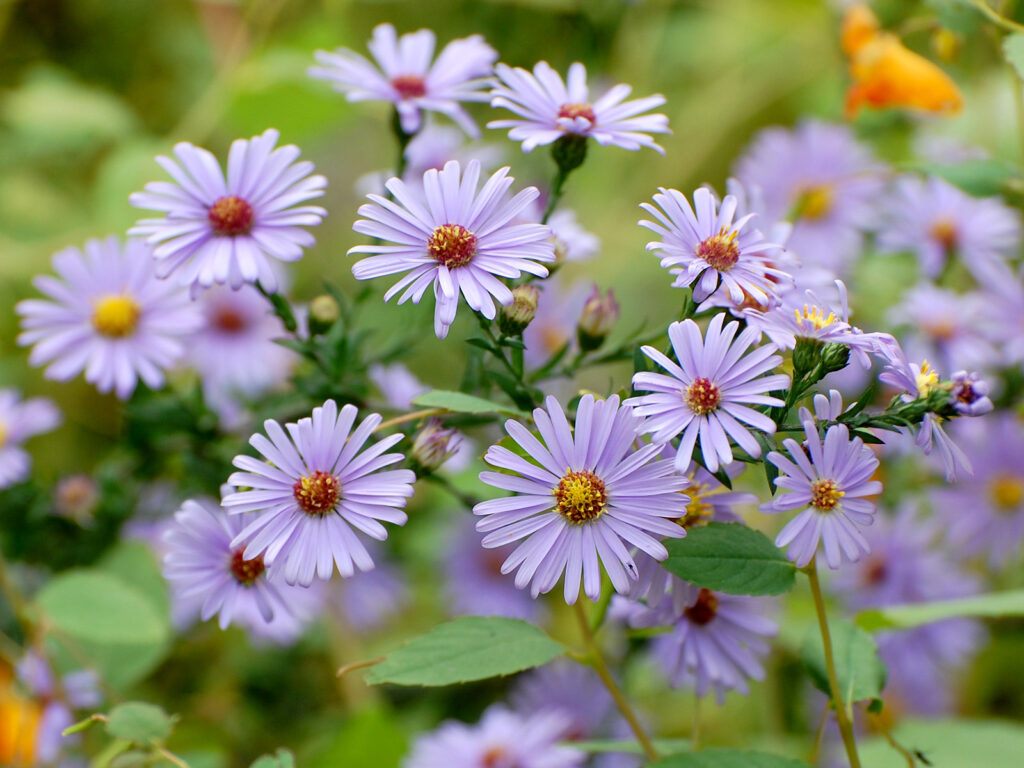
One of my favorites! The flowers are pretty, and a very nice shade of blue. I like the smooth leaves, too.
Asters are a host plant for pearl crescent butterflies.
** SPECIAL VALUE TO NATIVE BEES **
- Learn more:
- Wildflower Center: Smooth aster
Bigleaf aster (Eurybia macrophylla Syn: Aster macrophyllus)
I have in my records that I bought this aster long ago, but I find it difficult to tell them all apart. I’ll be checking for this plant this fall (2022) to see if I spot an aster with large leaves.
- Learn more:
- Wildflower Center: Bigleaf aster
KEYSTONE: New England aster (Symphyotrichum novae-angliae Syn: Aster novae-angliae)
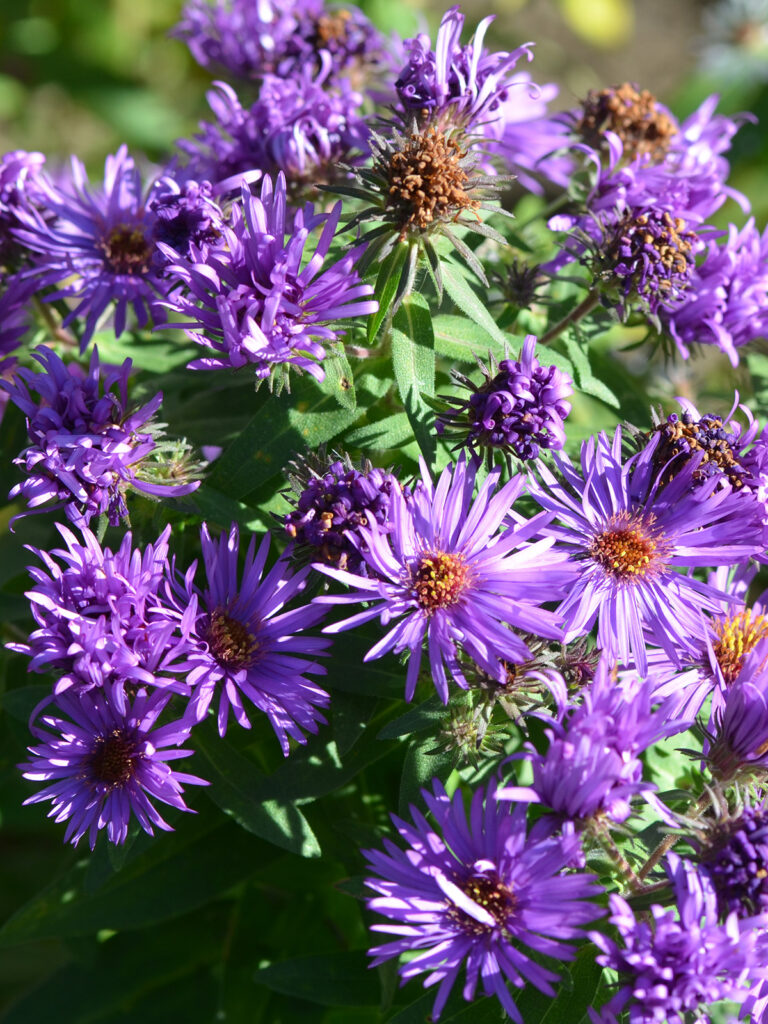
New England asters grow all over out “in nature” and are an important food source for monarch butterflies and other insects.
And when the flowers go to seed, they’re enjoyed by birds, too, so I don’t deadhead them.
Be careful! Cultivars don’t always have the important habitat qualities of the straight species!
Wildlife: Bees and butterflies, nectar for monarch butterflies
Larval host: Pearl Crescent butterfly
** SPECIAL VALUE TO NATIVE BEES **
** SPECIAL VALUE TO BUMBLE BEES **
- Learn more:
- Wildflower Center: New England aster
- Native Plant Trust: New England aster
KEYSTONE: New York aster (Aster novae-belgii Syn: Symphyotrichum novi-belgii)
This is another aster that my records show that I bought many years ago. I’m not sure whether it’s still growing or maybe just one of the many, many asters I have. It’s hard to tell them apart! I’ll be looking more carefully this fall (2022)!
- Learn more:
- Wildflower Center: New York aster
KEYSTONE: Frost aster (Symphyotrichum pilosum Syn: Aster pilosus)
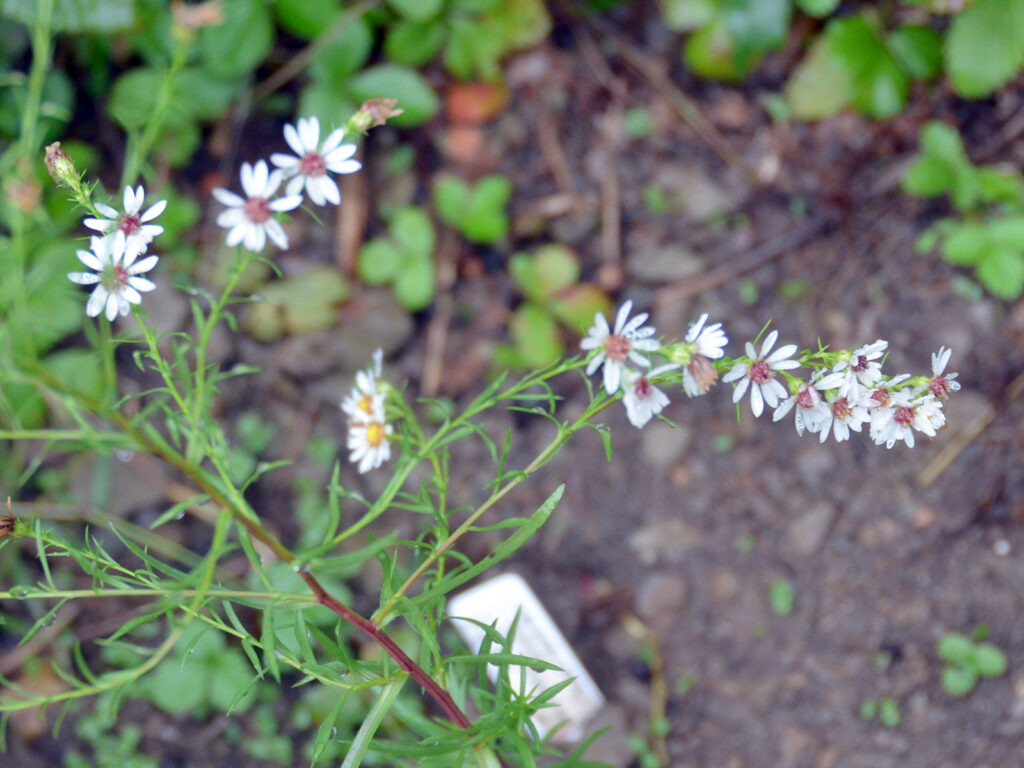
I planted this near the laundry area in the back yard just to add to the variety of asters available for bees and butterflies late in the season.
Wildlife: Butterflies
** SPECIAL VALUE TO NATIVE BEES **
- Learn more:
- Wildflower Center: Frost aster
KEYSTONE: Crooked aster (Aster prenanthoides Syn: Symphyotrichum prenanthoides)
This is another aster that my records show that I bought many years ago. I’m not sure whether it’s still growing or maybe just one of the many, many asters I have. It’s hard to tell them apart! I’ll be looking more carefully this fall (2022)!
- Learn more:
- Wildflower Center: Crooked aster
Upland white aster (Solidago ptarmicoides Syn: Oligoneuron album, Aster ptarmicoides) aka White flat-topped goldenrod
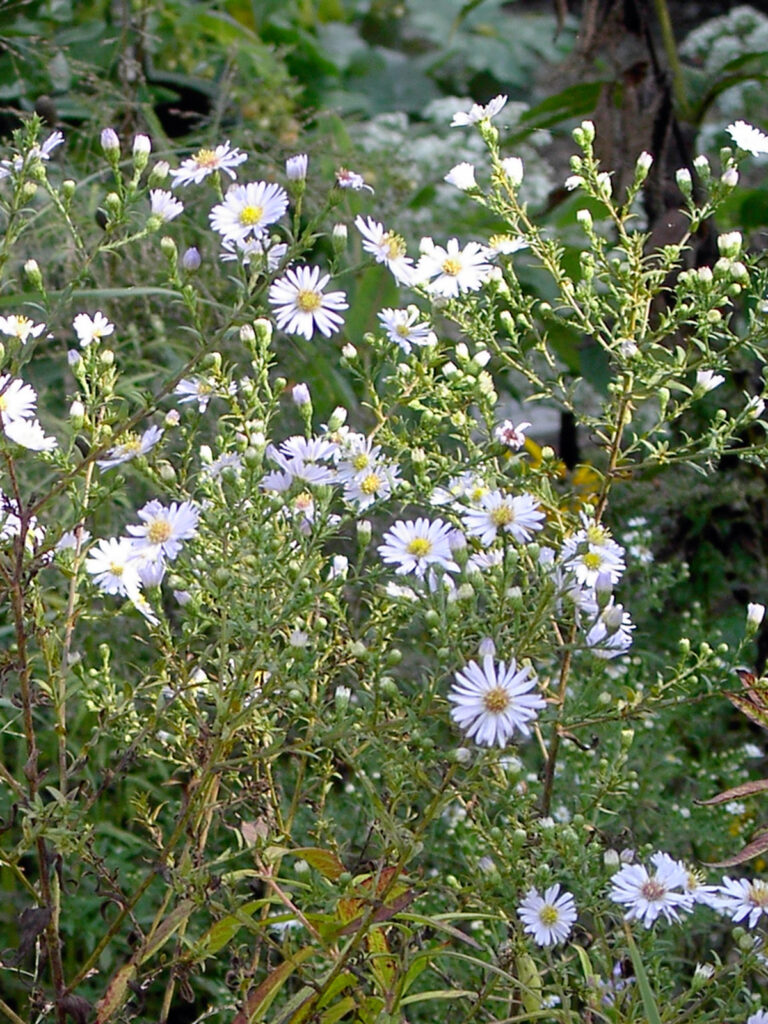
Oddly enough, this has apparently been reclassified as a goldenrod (Solidago ptarmicoides or Oligoneuron album).
For my purposes, though, I’m more comfortable continuing to consider it an aster. This has noticeably larger white flowers than the white woodland aster, for example.
(This assumes I’m identifying my plant correctly, of course!)
Wildlife: Butterflies
** SPECIAL VALUE TO NATIVE BEES **
- Learn more:
- Wildflower Center: Upland white aster
Tall flat-top white aster (Doellingeria umbellata Syn: Aster umbellatus)
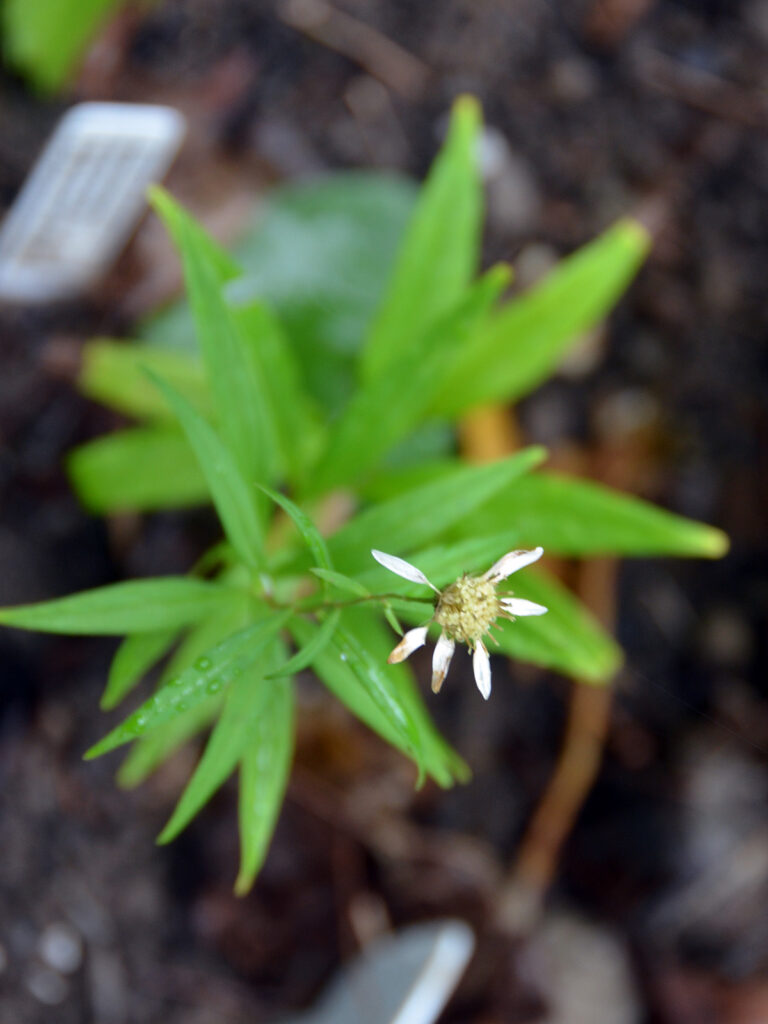
The photo shows it as a seedling I purchased. It will typically have many more flowers when it’s mature.
Wildlife: Butterflies
Larval host: Pearly Crescent, Harris Checkerspot
- Learn more:
- Wildflower Center: Tall flat-top white aster
